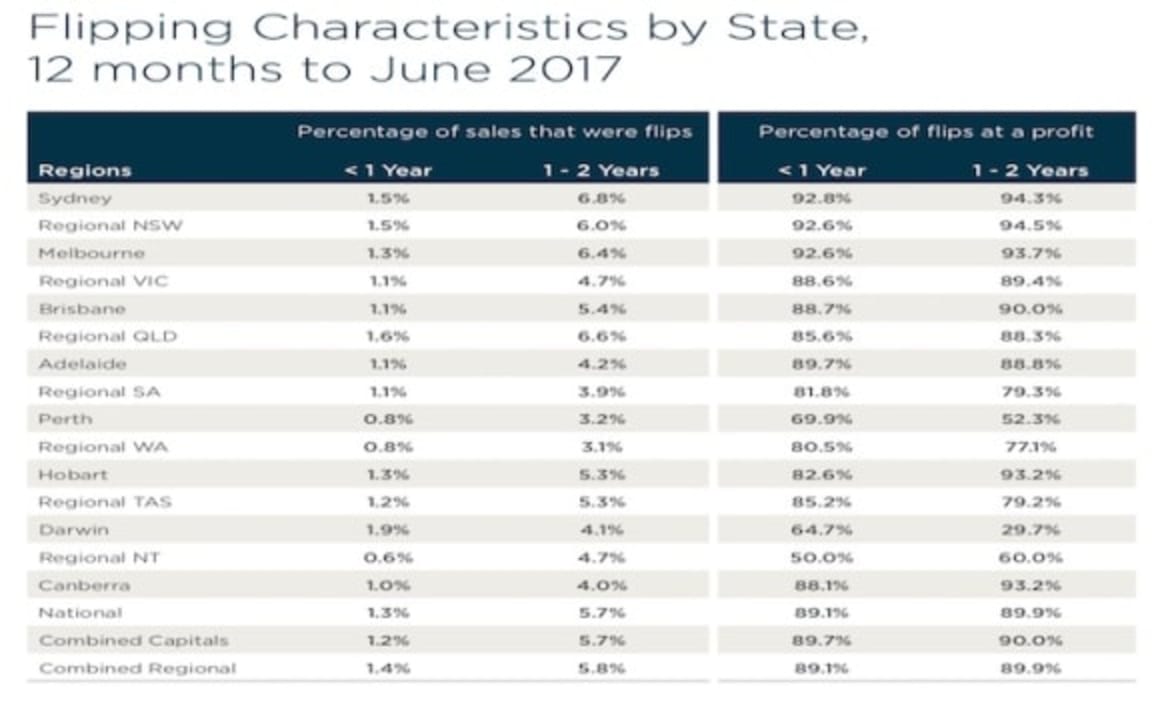Loss-making property flips on the rise, especially in Darwin: CoreLogic

Over the 12 months to June 2017, 3,861 dwellings were sold after having been held for less than a year nationally with a further 16,749 resold after being owned for between one and two years, according to CoreLogic.
These figures represented 1.3% and 5.7% of all resold property sales over the year.
Flipping remains a small proportion of the overall housing market however, flips between one and two years have been trending higher over recent times.
In its heyday in the early 2000s, 4.4% of all properties were flipped in less than 12 months and 16% were flipped between 12 and 24 months from previous purchase.
What is surprising is that the introduction of the capital gains tax discount for investors that held properties for more than 12 months in 1999, made little difference to flipping behaviour.
Click here to enlarge.

In fact, the incidence of flipping didn’t rise substantially until the national housing market boomed between 2001 and 2004.
Focusing solely on those properties which are ipped, the data shows that most of these properties are selling for a gross profit.
Over the 12 months to June 2017, 10.9% of flips held for less than 12 months were at a loss and 10.1% of flips held for between 12 and 24 months resold for a loss.
Although the proportion of flips at a loss has declined from recent highs in 2009 and again in 2012, there has been a clear increase in loss-making flips recently.
The rising number of loss making flips highlights there is some financial risk in flipping, keeping in mind that the proportion of loss making flips on a net basis is likely to be substantially higher once expenses are taken into account.
Across the major regions of the country, flipping was more prevalent in Sydney, Melbourne and Regional QLD.
Darwin was the weakest capital city for prices in 2017.
Its resale losses have also been a problem in recent years.
The propensity to flip in Sydney and Melbourne is likely due to the strong run-up in values over recent years whereas regional QLD is probably seeing greater propensity to flip as people struggle to meet mortgage repayments as unemployment has risen and dwelling values have fallen.
Vendors in Perth, Hobart, Darwin, regional QLD, regional SA, regional WA, regional TAS and regional NT were the most likely to ip their properties for a loss.
In most of these regions value growth has been sluggish for a number of years which makes flipping for a profit much more difficult.